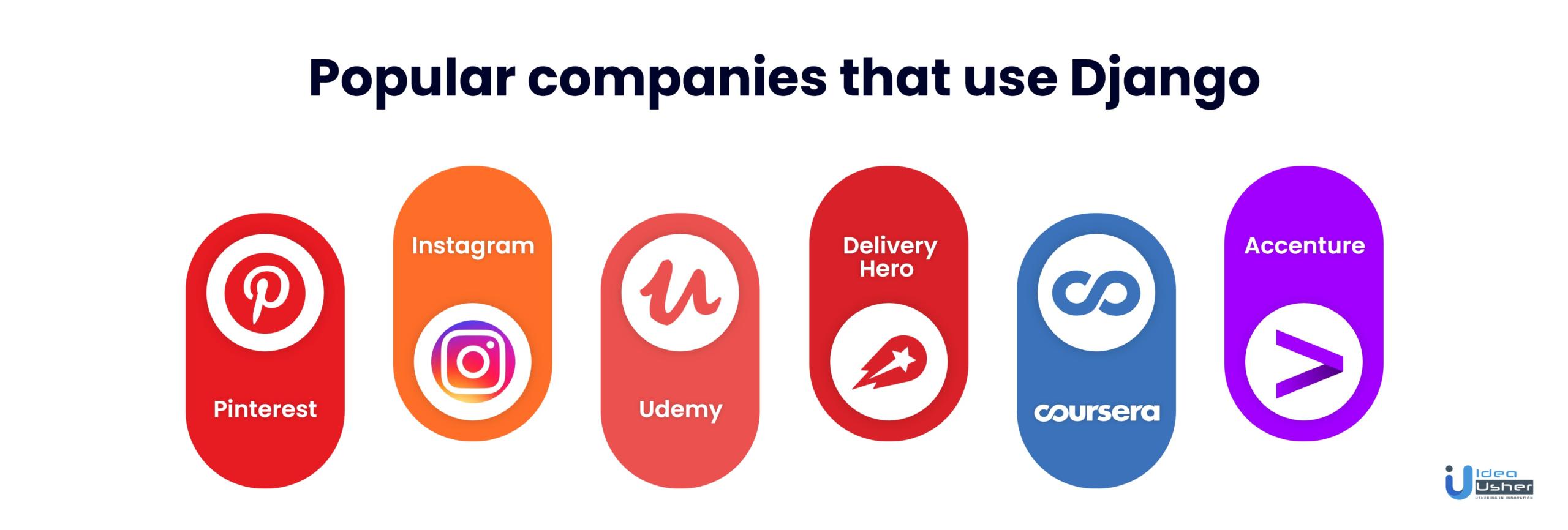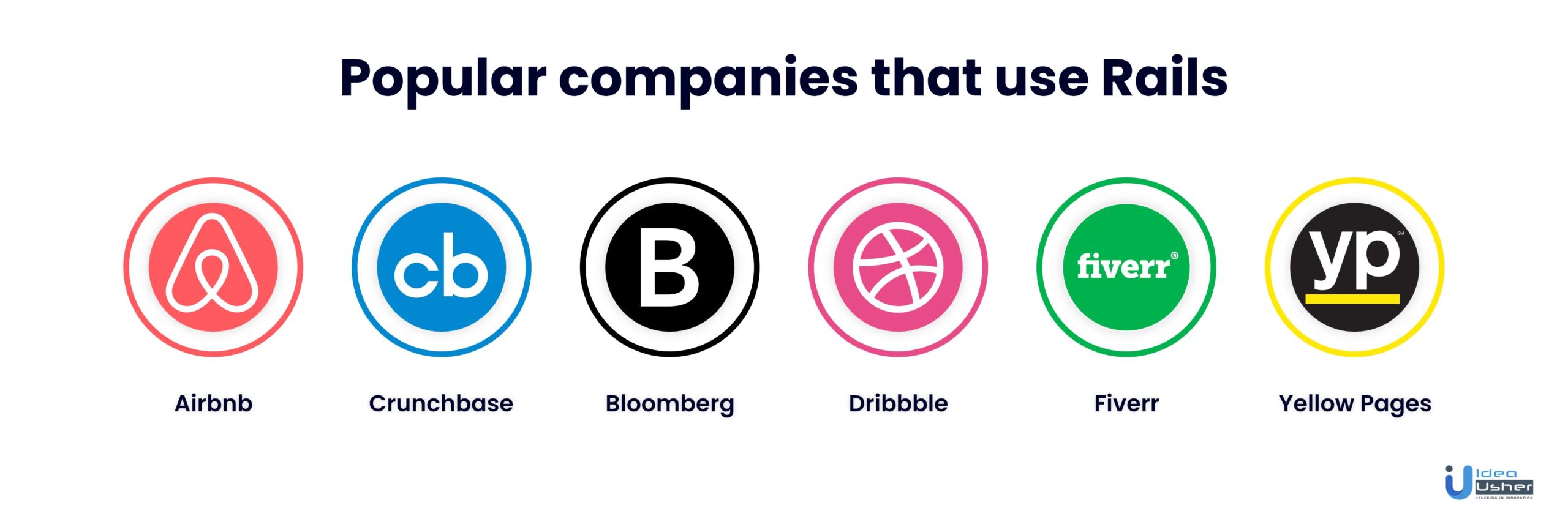
The age-old debate continues, Django vs Rails, which web development framework is better? And why?
Idea Usher developers are here to answer all your questions.
Among the many web development frameworks that are in use today, Django and Rails are undoubtedly among the best in 2020. They are widely used by developers due to their stable and robust system and will only gain more popularity in the years to come.
Before getting started with the difference between Django and Ruby on Rails, let’s understand the two frameworks separately.
What is Django?
Django is a robust Python Web framework that encourages rapid development with its clean and pragmatic design. Ever since its inception in 2005, it has been the most preferred python framework for developers all over the world.
It is open-source and has a vast community of developers who are always ready to help each other, increasing the scope of development and creativity.

Pros of Django
Here’s why Django is so popular among developers.
- Speedy development process
- Is secure against common attacks like CSRF and SQL Injections
- Has an effective and efficient admin panel.
- Supports external libraries
- Highly reliable Object Relation Mapping (ORM) system
Cons of Django
Even though Django is preferred by many, it has some disadvantages as well.
- Boilerplate configuration slows down the development process.
- Not the best for small sites, Flask might be better.
- Python is a comparatively slower language, leading to slow websites.
- It is too complicated for simpler web applications.
- It is incapable of handling multiple requests simultaneously.
What is Rails?
Ruby on Rails is a classic that only got better with time.
Ruby on Rails, more commonly known as Rails or RoR, is a full-fledged web framework built on Ruby programming language. It was, specifically, built for fast software development guaranteeing quick launches, and for the very reason is still often called a “startup technology.”
This web framework works on two basic principles, Convention Over Configuration and DRY (Don’t Repeat Yourself). These principles together make the tool a lot easier and quicker to use. It is today one of the most popular instruments of web development.
–
Pros of Rails
Here’s why Rails is still a popular tool in web development.
- Its MVC philosophy promotes modularity and extensibility of your app.
- Manages complexities efficiently
- Has a vast and vibrant RoR community
- High speed of development
- Comes with an efficient package management system
Cons of Rails
With time ruby on rails might be getting rusty.
- Slow runtime makes it harder to scale RoR applications.
- Lacks flexibility, might not suit your unique needs.
- A little mistake can have catastrophic and expensive consequences.
- Structural deficiencies are hard to fix, make the framework unreliable.
- Not an ideal framework for beginners.
Similarities between Django and Rails Framework
Django vs Ruby indeed has several significant differences, but there are a few elements that make the two web frameworks a lot alike. Let’s discuss them in detail.
Similar Languages
Rail operates on Ruby and Django on Python. Even though they are two different languages but are quite similar to one another.
Python and Ruby both are object-oriented dynamically typed languages. When compared to Java, these two languages are more robust and scalable.
Their active communities ensure that they are frequently updated, and support is available whenever developers are stuck.
Architecture
Both Python and Ruby operate on Model-View-Controller (MVC) framework. Breaking the terms down:
- The Model manages relationships between objects and the database,
- The View comprises of templates that are put to use to build the data users of web applications,
- And the Controller binds models and views together.
Based on the MVC model, the architecture of Ruby and Python is well structured and organized. The layout is a bit different but not significantly.
Performance
Both of these languages rank the same on the level of performance with only minute differences.
Ruby and Python are both incredible at CPU expensive operations, such as image manipulation, and they can also serve thousands of users. However, it takes a lot of work to configure them for such a high volume.
In conclusion, if you are in search of a solution that ensures high performance for massive volume, your best bet would be Elixir or Node.js.
Now that you know a little about both of these frameworks and how similar they are, let’s get to the primary purpose of this article and highlight the differences between Django vs Ruby on Rails 2020.
Comparing Django vs Rails
Major differences between Django vs Rails 2020:
Language
The major difference between the two is their programming languages. While Django operates on Python, Rails uses Ruby as its programming language.
Owing to its ease of use and adaptability, Python is the top programming language among developers. It is easy and fast to learn and emphasizes on code’s simplicity and readability.
Ruby, on the other hand, was designed to be a “fun and enjoyable” language. It is as easy as the English language, allowing developers a more expansive room for customization and flexibility.
Architecture
One thing that both of these web frameworks have in common is their architecture framework. While Django adopts the MVT (Model-View-Template) model, Rail operates on the MVC (Model-View-Controller) model, the two are only slightly different.
Django’s model represents the data that defines the data structure, View is a simple URL dispatcher based on Regular Expression, which controls what users see. And Template is responsible for merging Django Template Language.
Rails’ model is slightly different. Active Record takes care of the server information. The View covers the info in the HTML template and sends it to the controller. And, the Action Controller then links Model and View and manages web browser responses.
Installation
Django definitely takes a win on this one. Comparing Django vs Ruby on installation speed is pretty straightforward.
Django is quick to install with a simple procedure, whereas, in order to install Rails, you need to understand what Gems and Bundle are. Only after installing these two can you run the “Command Gem Install Rails” to install the latest version of the Rails framework.
Speed & Performance
Django vs Ruby on Rails performance are both high as they equip developers with modern programming languages while supplying them the tools to optimize the software as well.
Owing to a rich repository of extensive libraries and plugins that enhance the speed and, ultimately, the performance of the Rails framework, it is 0.7% faster. Nonetheless, Django’s rapid development process makes it an incredible choice for developing web applications.
Stability
In this battle of Django vs Rails stability, the one that has room for creativity while ensuring stability would come out as the winner.
Python is a stable programming language as it sticks to conventionally proven methods to solve problems at hand but doesn’t leave room for much creativity.
While Ruby on Rails’ principle of DRY (Don’t Repeat Yourselves) allows users to reuse codes to avoid dependencies, and its configuration convention reduces the need for any further efforts. Due to this added flexibility and ease, developers are able to juggle both creativity and stability.
Security
When it comes to comparing web frameworks such as Django vs Rails, security is a vital factor. And Django comes out as the clear winner in this round. Why, you ask?
NASA uses the Django framework, which in itself is proof enough of how stable and secure it is.
While both of these frameworks are reliable and trusted for security, Django’s tools protect apps and websites from common security attacks like SQL injection and cross-site (XSS) scripting.
Syntax
Ruby was designed to be flexible and versatile for coders. While this feature of Ruby on Rails surely provides a wider room for creativity, but it makes it difficult for a developer to pass on some task to another member of the team. There are numerous ways to code a single feature, creating confusion.
Python is a safe choice in this regard. There is only one standard way to carry out each task on python. It makes debugging and reading the code in a team easier.
While Rail might be suitable when choosing between Rails or Django for startups, but for bigger companies, Django is a more convenient option for a bigger team of developers.
Scalability
Both Django and Rails were designed keeping in mind scalability, but Django still lags behind Rails. Due to attributes like freedom and flexibility of code, with Rails, developers enjoy better scalability.
Community Support and Ecosystem
Django has an open-source ecosystem and is widely used, which means developers can access extensively huge libraries and software. Django’s official documentation is adequate to answer a beginner’s questions.
Comparing Django vs Rails popularity, Django takes another win with a massive community of developers with thousands of ready-made products. On the other hand, Ruby, too, has a committed group of developers who have contributed several Gems.
Learning Curve
It is a widely known fact that python is an easy language to learn, making Django’s learning curve small. Thanks to its popularity among developers and the massive community, the numerous offline and online resources available make it easier and quicker to solve queries as and when they arrive.
However, Rails, with its flexible coding principles, has a much steeper learning curve. It is more common among experienced developers.
On comparing Django vs Rails jobs, it would be fair to say that owing to the wide popularity and easier learning curve, Python is the basic requirement for any job.
Django vs Rails, Which is Better?
Coming back to your question, which one of the two is better for you?
Well, It is a hard question to answer. Django and Rails have their pros and cons but are equally powerful and popular when it comes to developing robust websites or web applications.
Based on the essential details highlighted in this article and your requirements, you must decide what would work best for you!
Or, there is an easier way out!
Idea Usher is at Your Service
Our web developers have years of experience and expertise in not only Django and Rails but also in other popular web frameworks like Flask, Angular, and more.
We will build you robust and scalable websites and web applications to empower your business like no other. Our developers also hold experience in other areas of IT and will build you the perfect elixir of success for your business.
Contact us for a free consultation session today!







